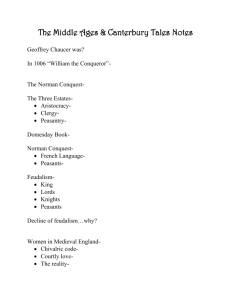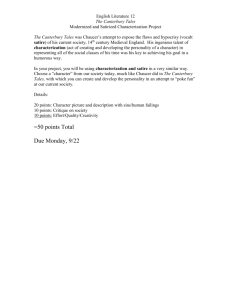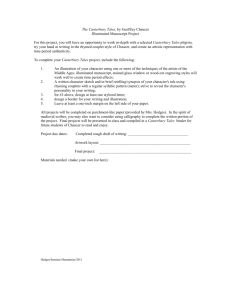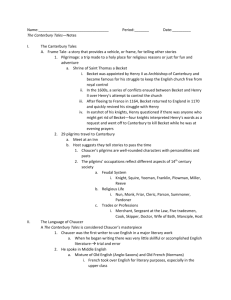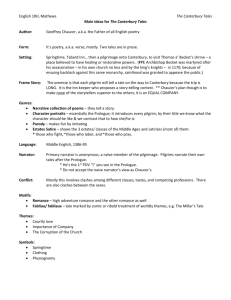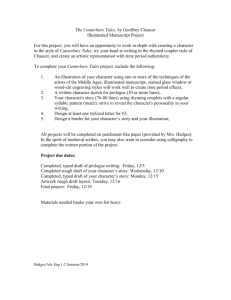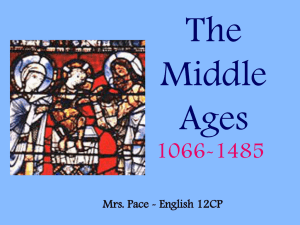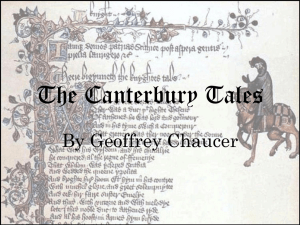Geoffrey Chaucer - Jeannette City School District
advertisement
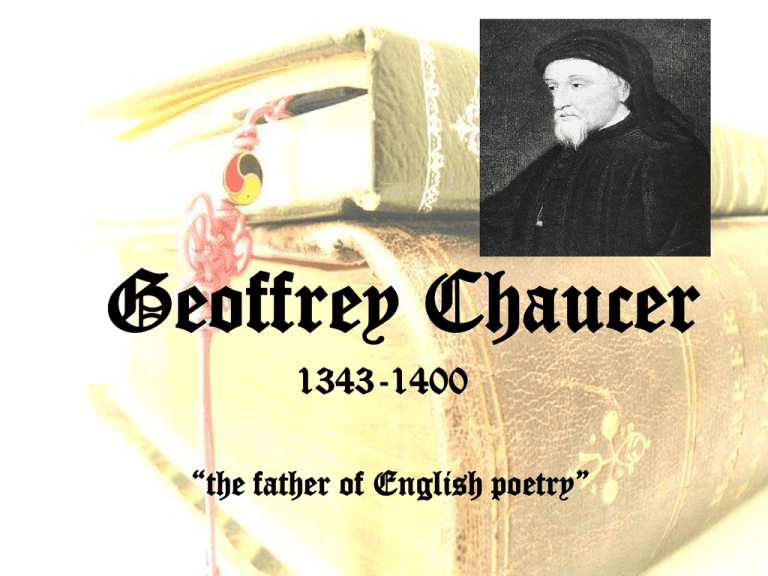
Geoffrey Chaucer 1343-1400 “the father of English poetry” life • • • • • • born in London son of a prosperous wine merchant likely attended school at St. Paul’s Cathedral could read French, Latin, & Italian married Philippa, a maid to the queen retired in 1399 – leased house in garden of Westminster Abbey • first to be buried in Westminster Abbey (Poet’s Corner) experienced various classes of society • worked as a page/squire to people who knew King Edward III • served in the English army (Hundred Years’ War) – captured and held prisoner – King paid his ransom • married a lady-in-waiting to the queen • traveled widely served w/in gov’t • • • • • controller of customs Justice of the peace member of Parliament worked on diplomatic missions project manager for repairs to Westminster Abbey and the Tower of London • King Edward III’s subforester Literary contributions • • • • poetry noted for his insight into human character master storyteller examples: * Troilus and Criseyde (love story) * The Canterbury Tales (satirical narrative about classes w/in society) The Canterbury Tales Background information: It was common for people of Medieval England to make pilgrimages to sacred shrines Usually this was a personal, religious experience Canterbury, England was a town about 50 miles southeast of London Sight of Canterbury Cathedral, where archbishop Thomas a Becket was murdered in 1170 Thomas a Becket • appointed to position of archbishop by King Henry II, who was wanted to stop the church’s authority over gov’t • appealed King Henry’s request to the Pope in Rome and won • four of Henry’s knights murdered Becket in 1170 within the cathedral • King Henry tried to condemn the crime by taking a pilgrimage to Becket’s tomb Chaucer’s influence • In 1388, while in his 40s, he made a pilgrimage, himself, and was struck by the mixed classes of the assembled company • wanted to show the variety of human nature and how people exploit their own cultures, especially religion PLOT FRAME STORY-includes another story or stories within the basic plot structure • The characters in the story interact with one another, not always cordially, and tell tales to entertain one another to and from Canterbury • The tales reveal their hidden motives, feelings, and beliefs • Chaucer died before finishing all the tales CHARCTERS • “nine and twenty” pilgrims – the story reveals 30 pilgrims, the owner of the inn, and Chaucer, himself • all introduced in “The Prologue” • represent 3 areas w/in society – church (i.e. nun, friar, pardoner) – court (i.e. knight, squire, reeve) – common people (i.e. merchant, inn keeper) • possess universal, stereotypical traits with individual, unique qualities SETTING • Tabard Inn @ Southwark, England (a city near London) • spring (April) • the journey to and from Canterbury, England THEME • the infinite variety in human nature • the exploitation of religion for personal gain CHARACTERIZATION • the methods by which an author creates a personality for his/her character(s) – narrator’s direct statement – a character’s interactions / dialogue – a charcter’s beliefs, thoughts, and actions – a character’s physical appearance – comments from another character in the story Let’s Read!



